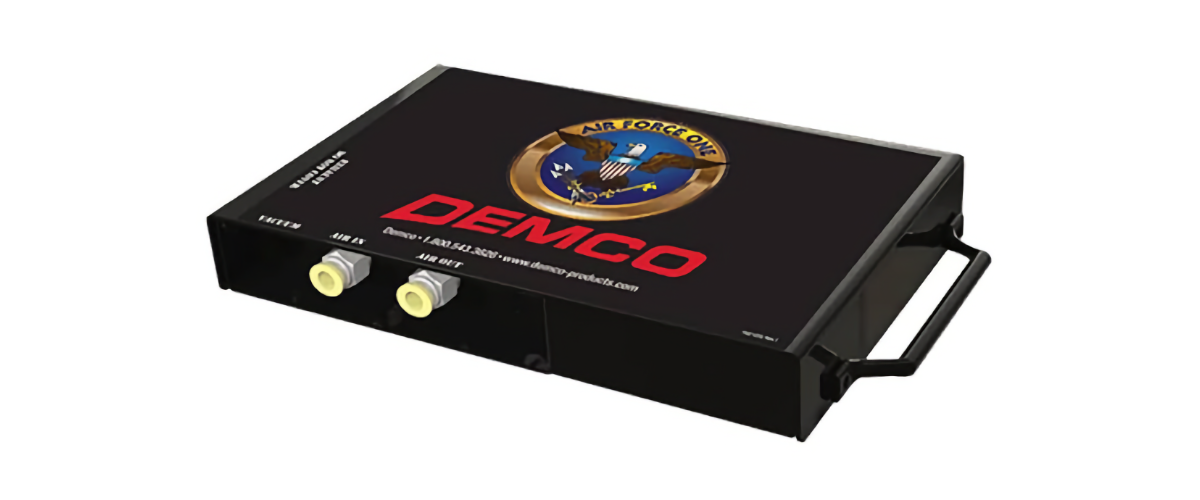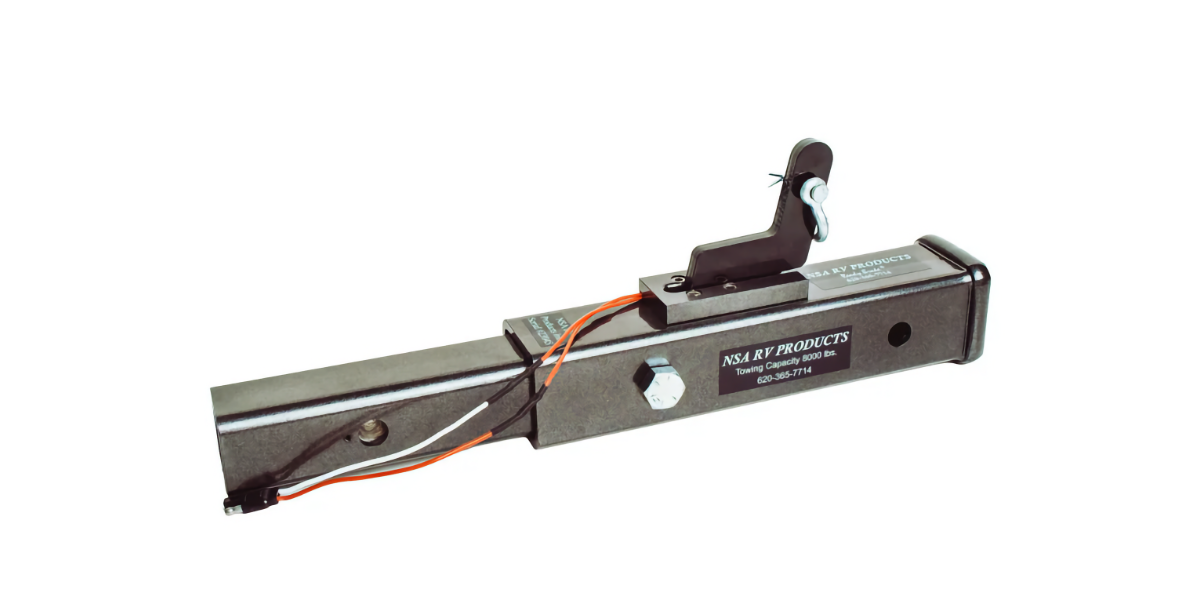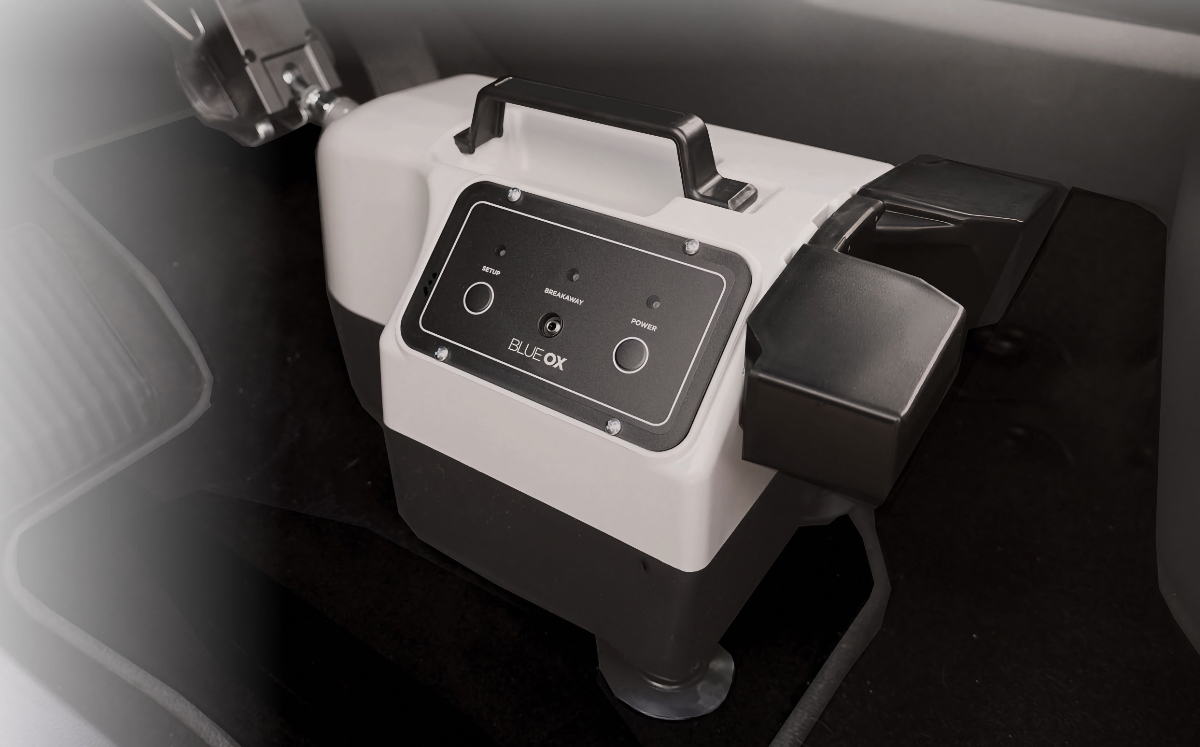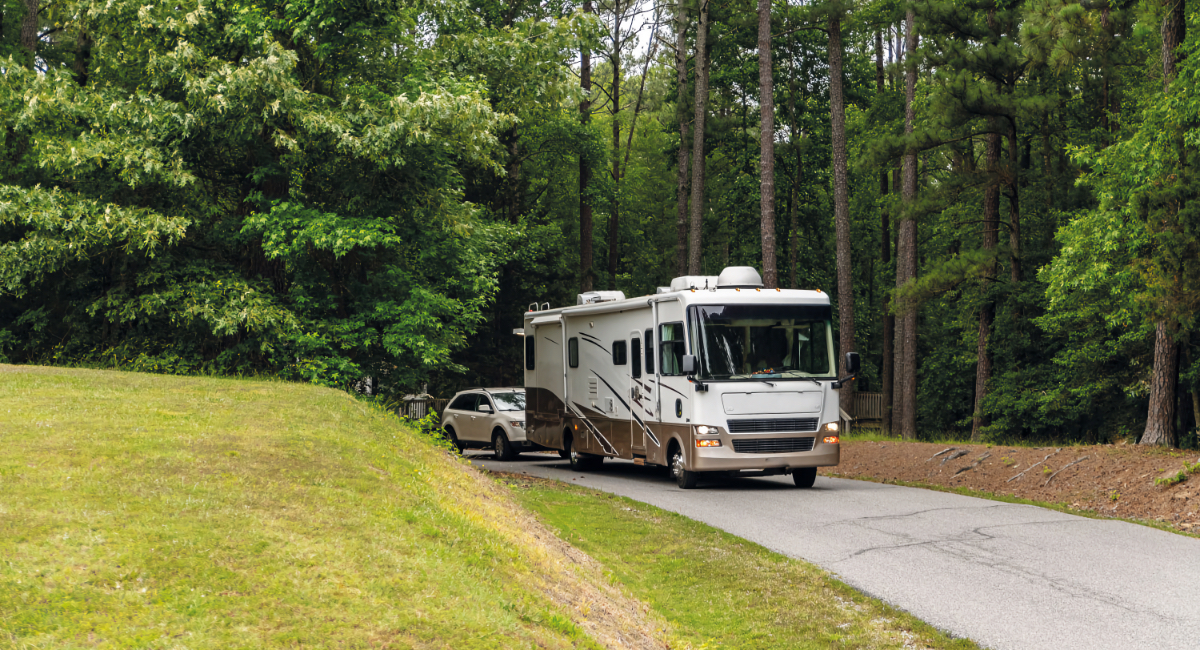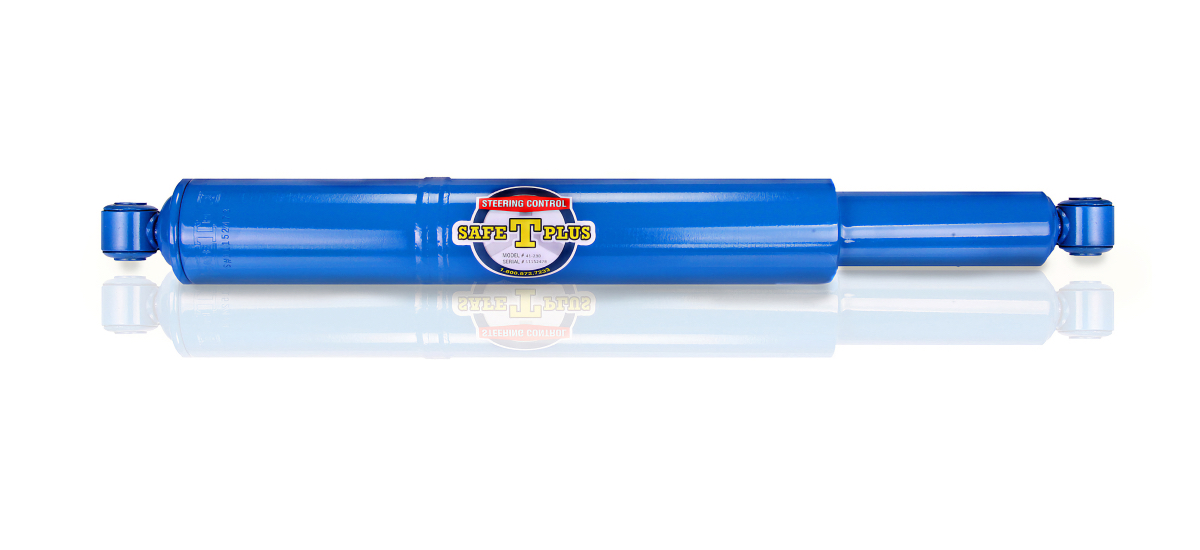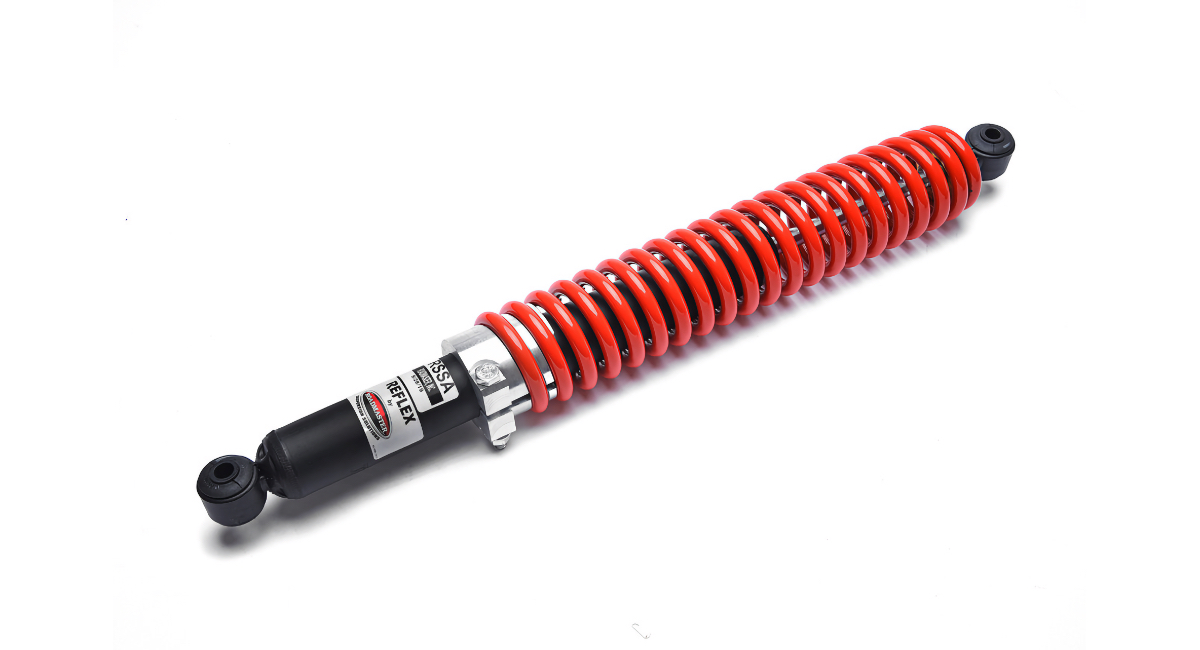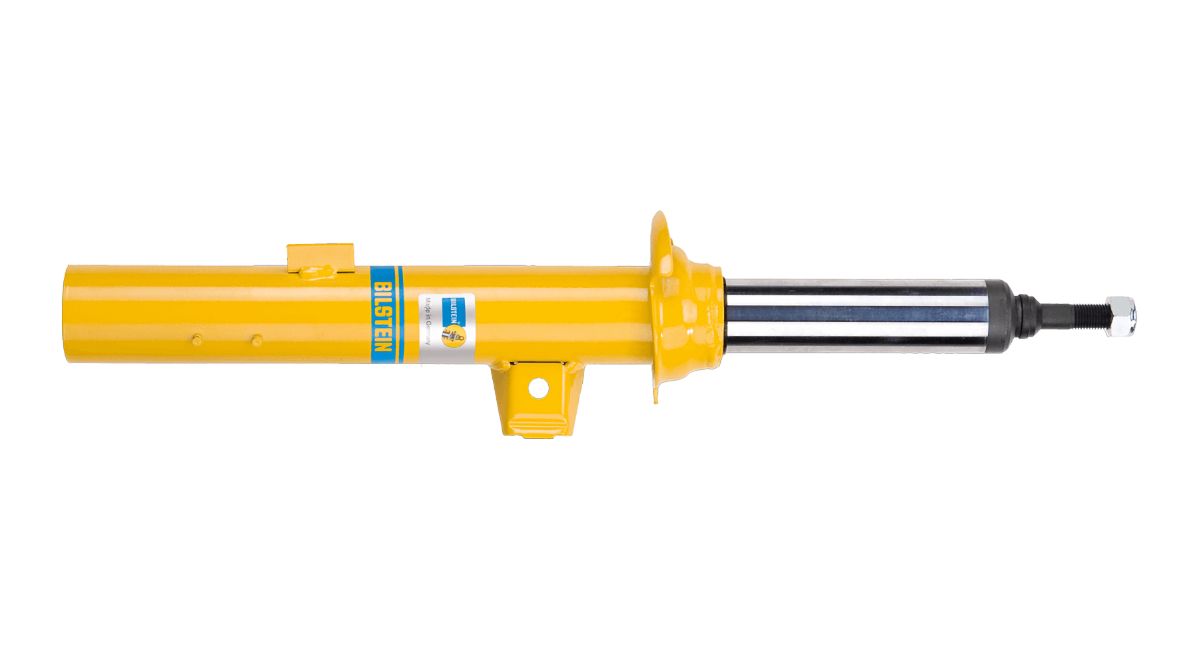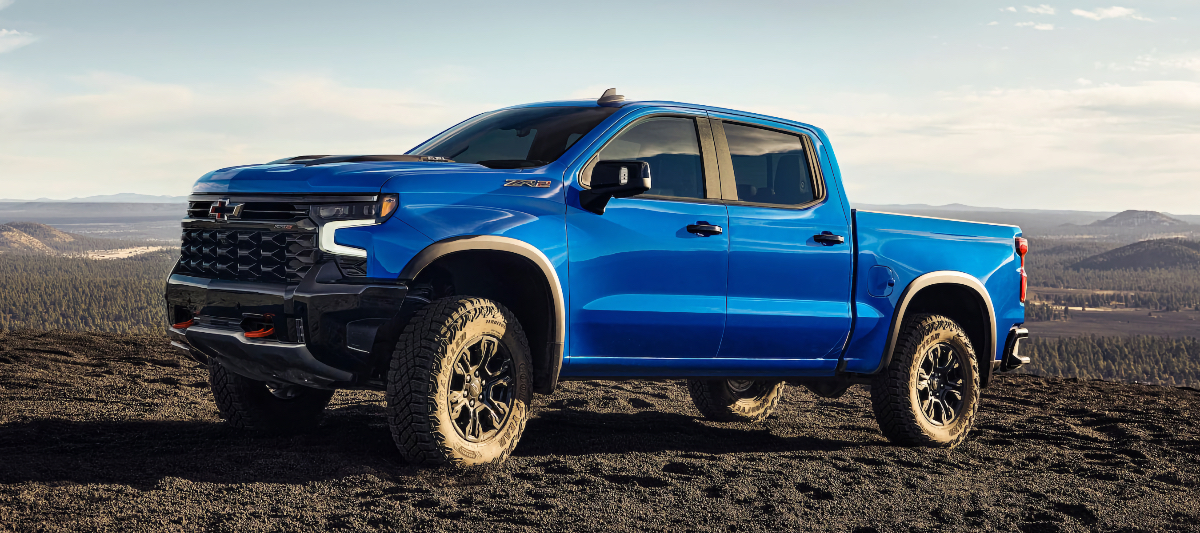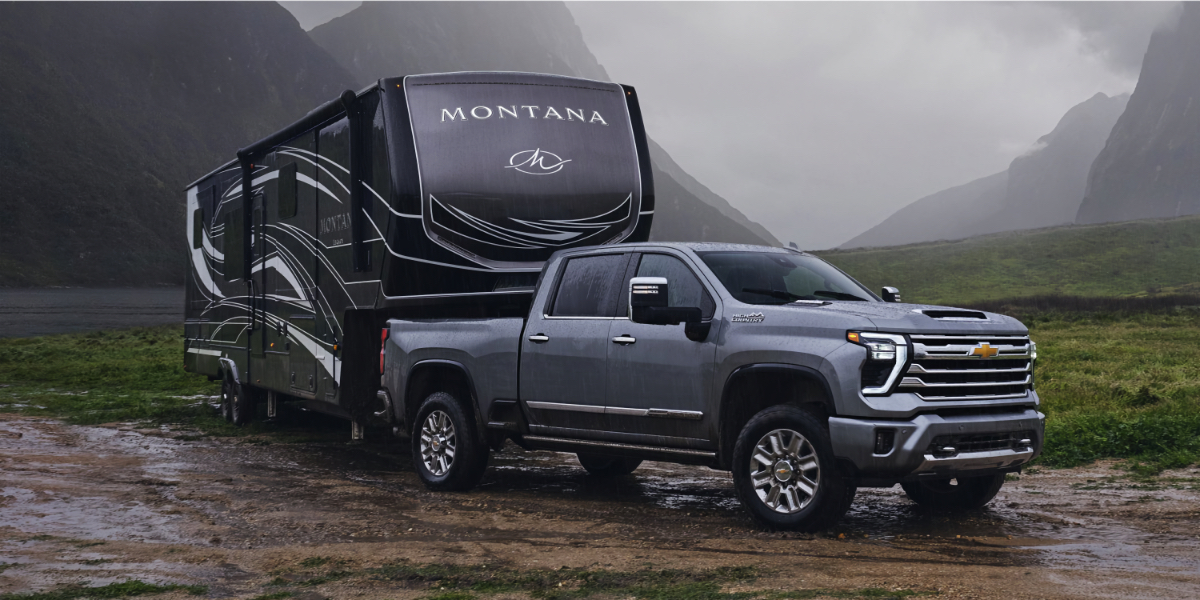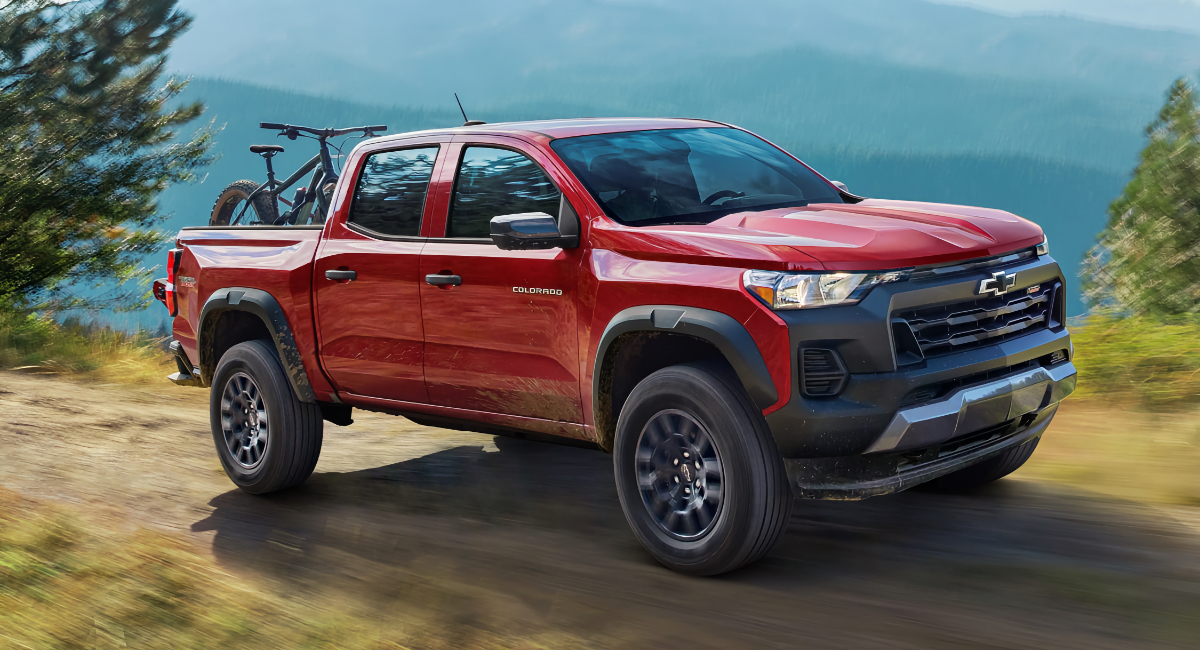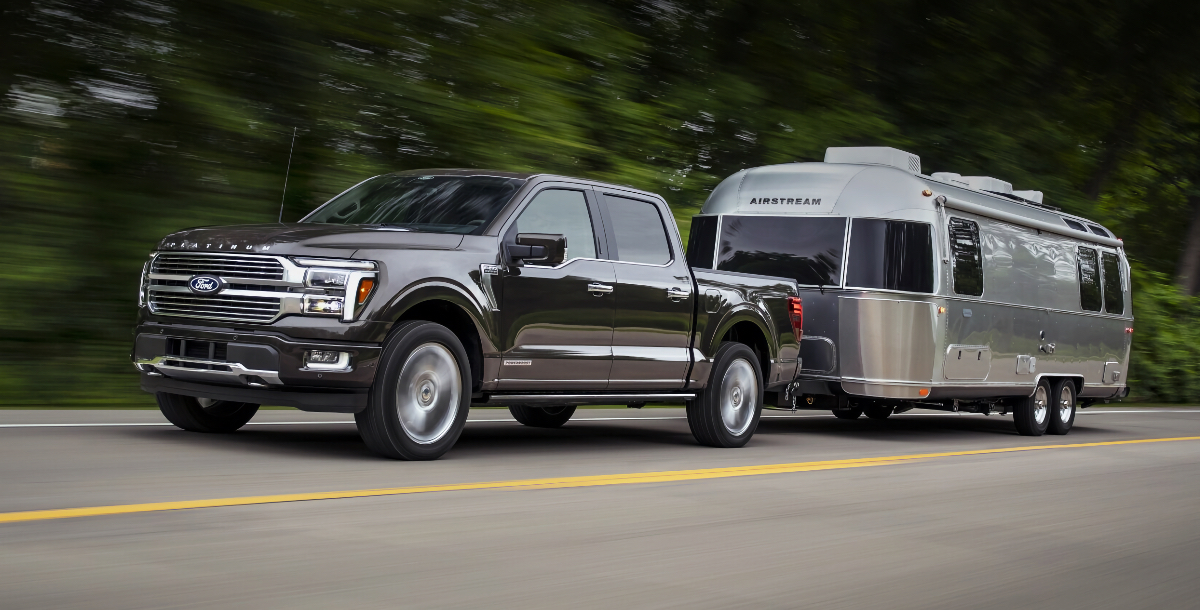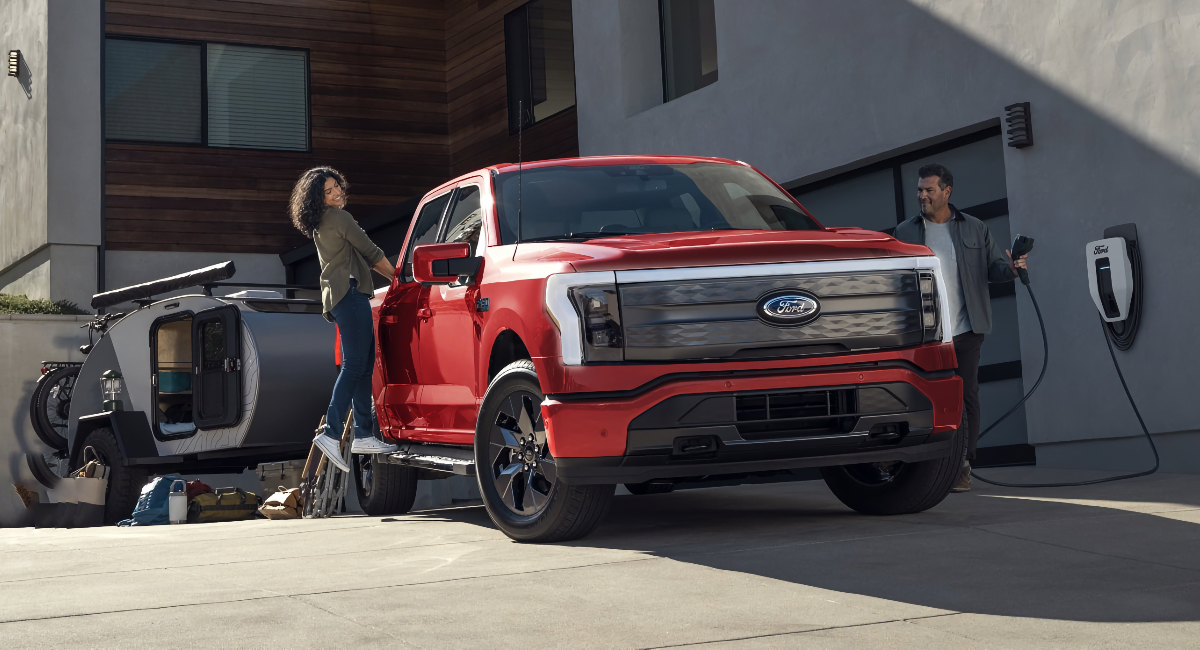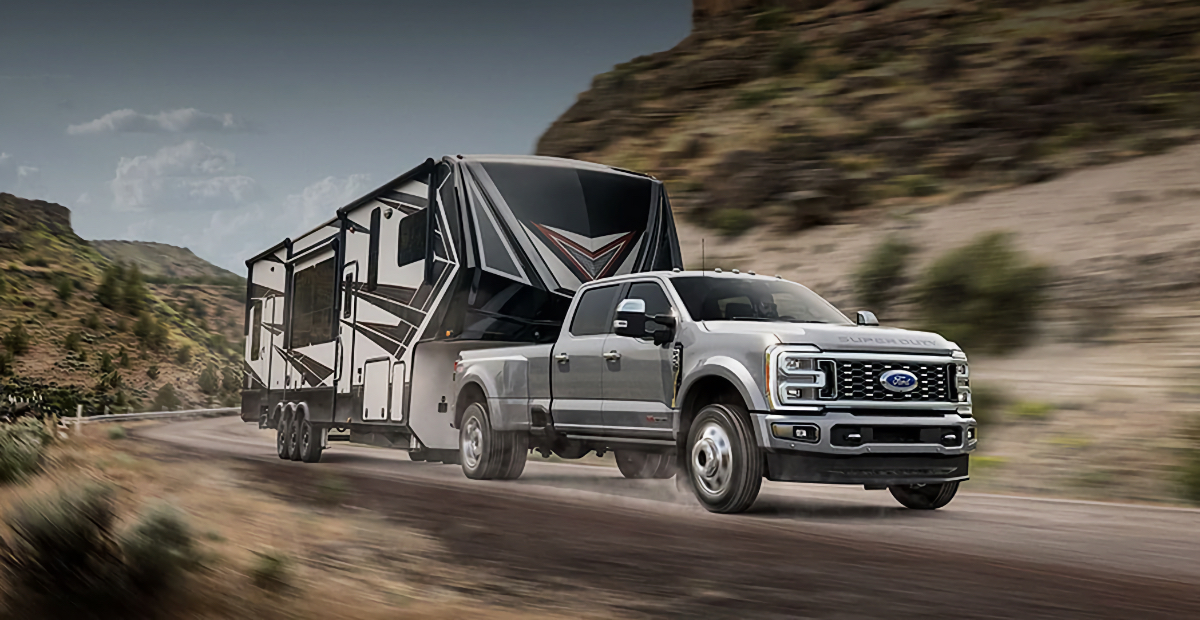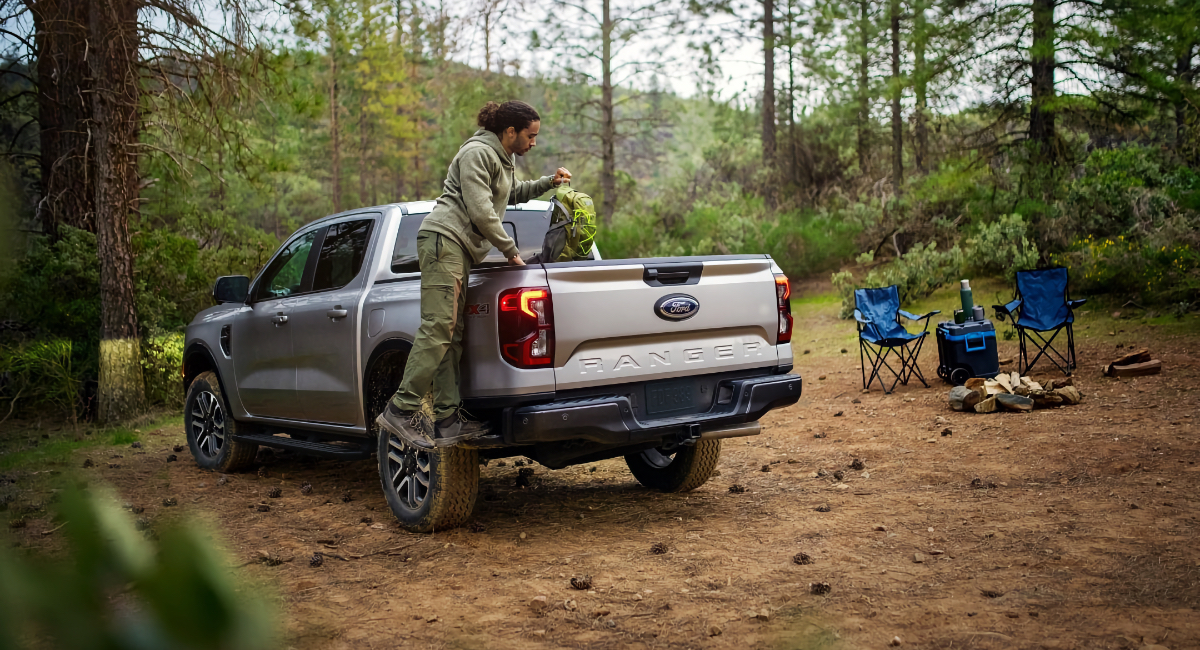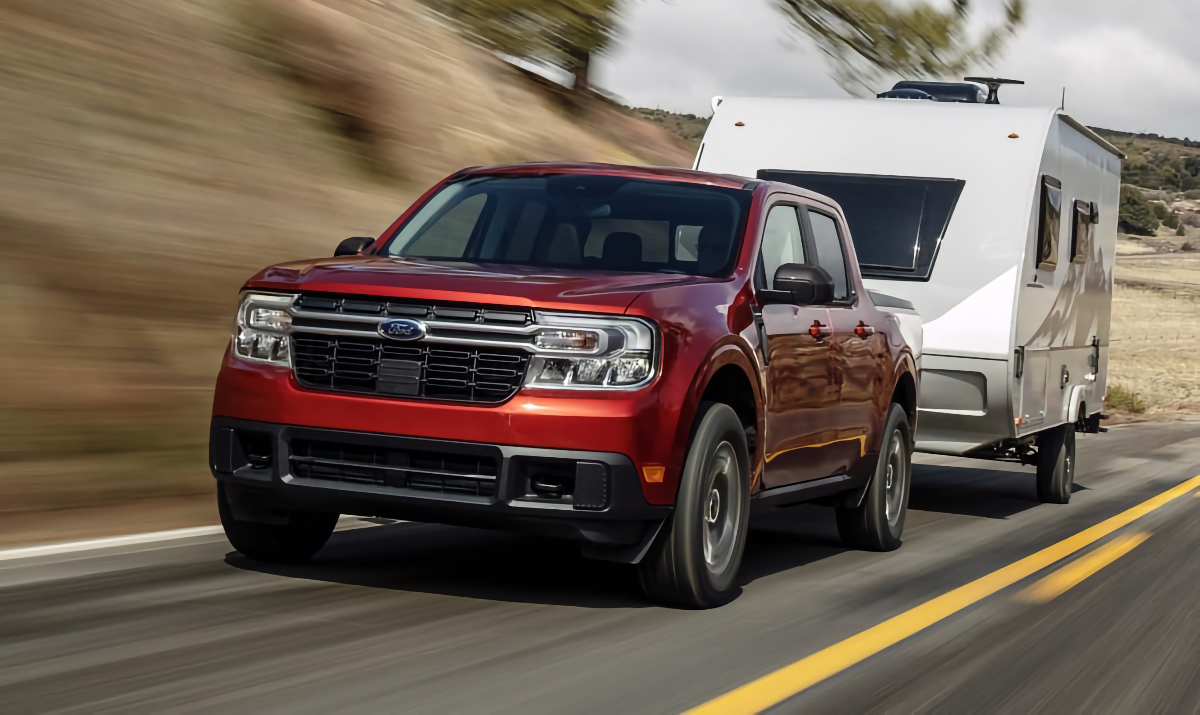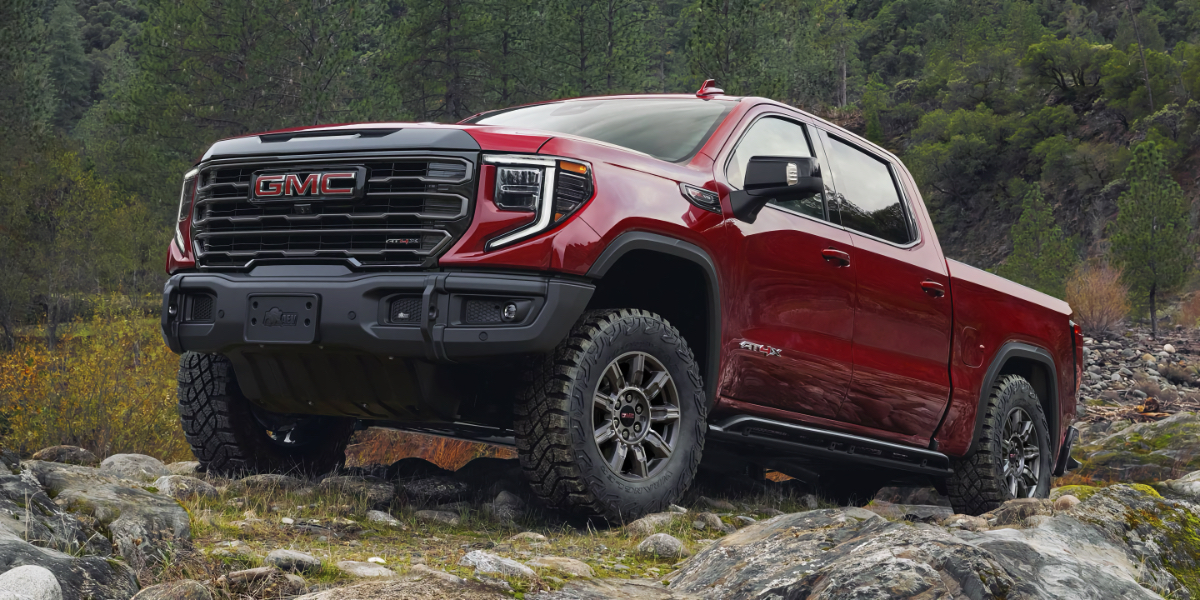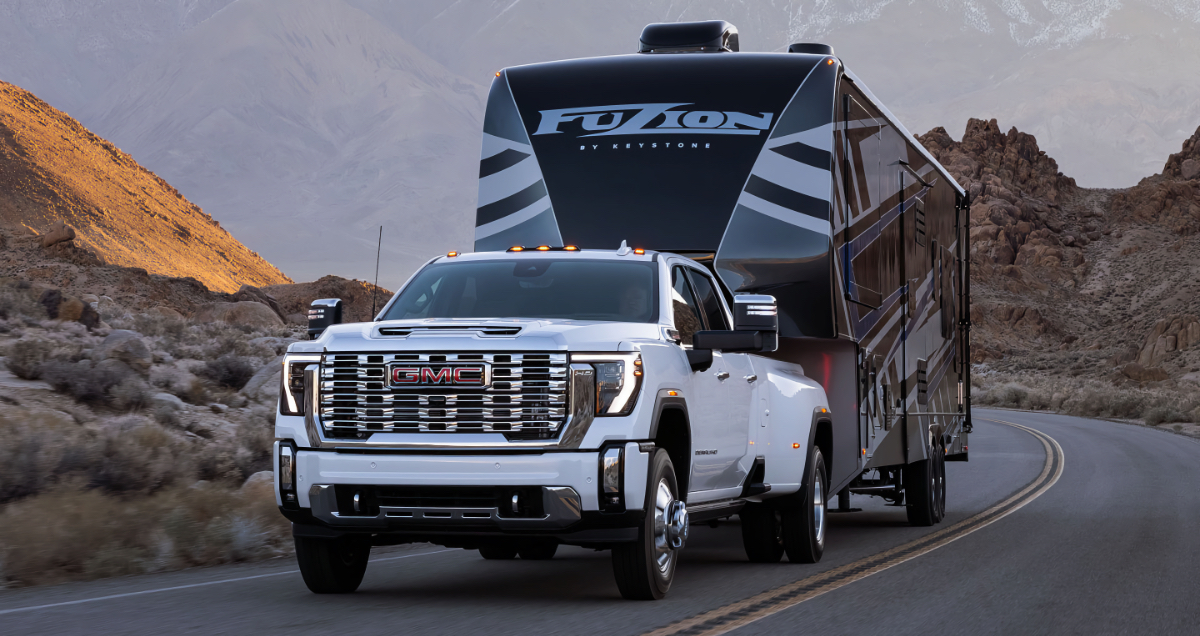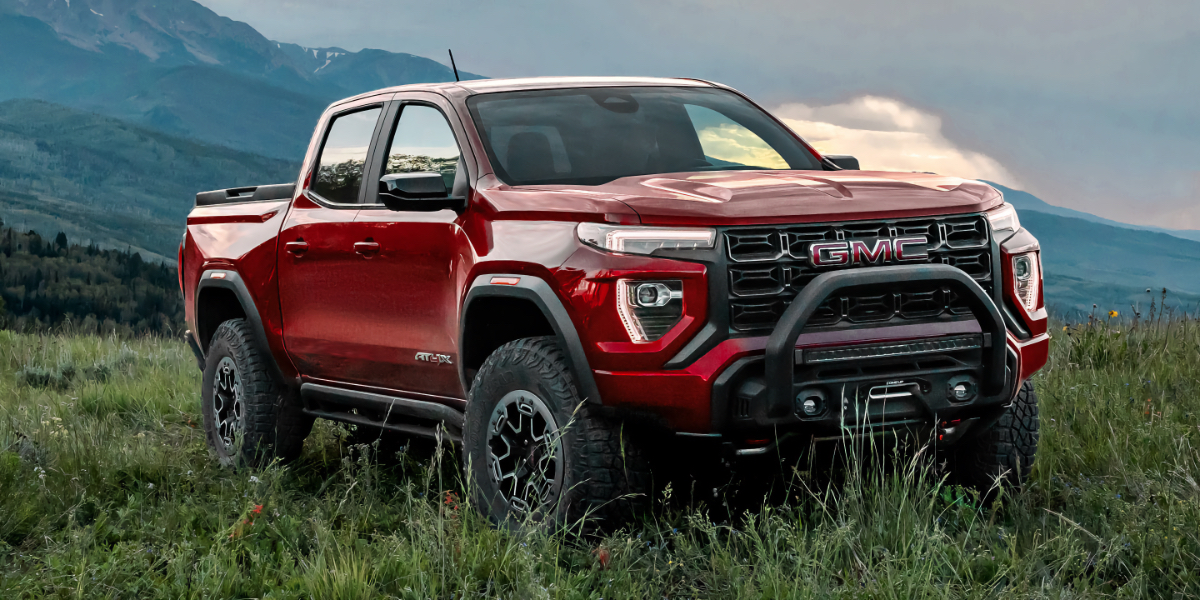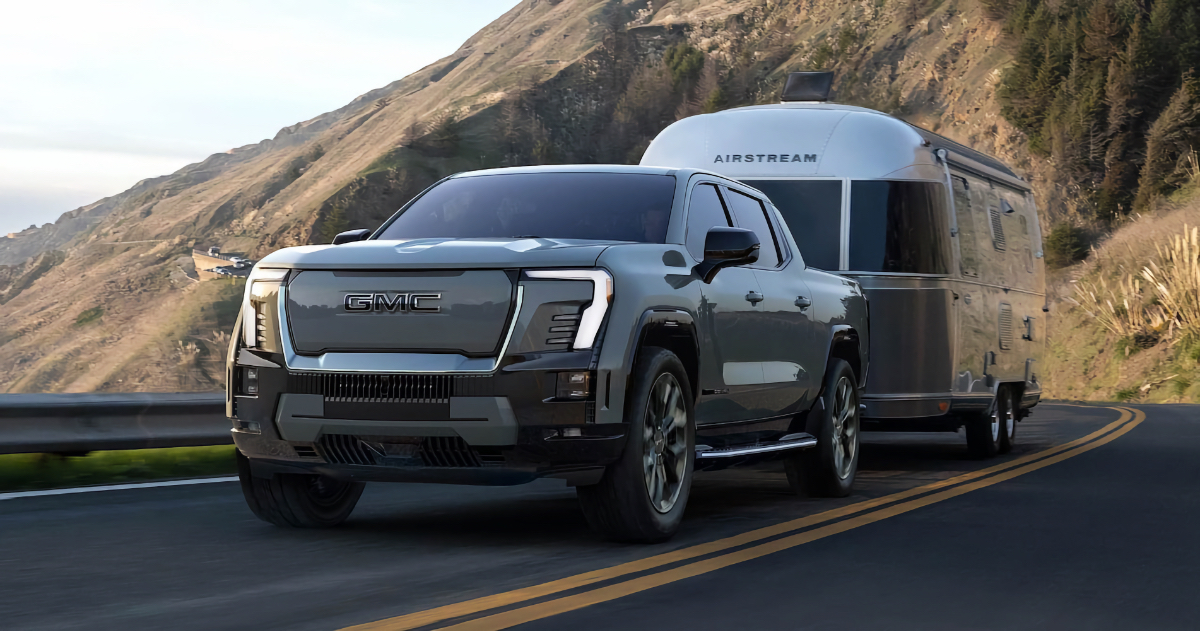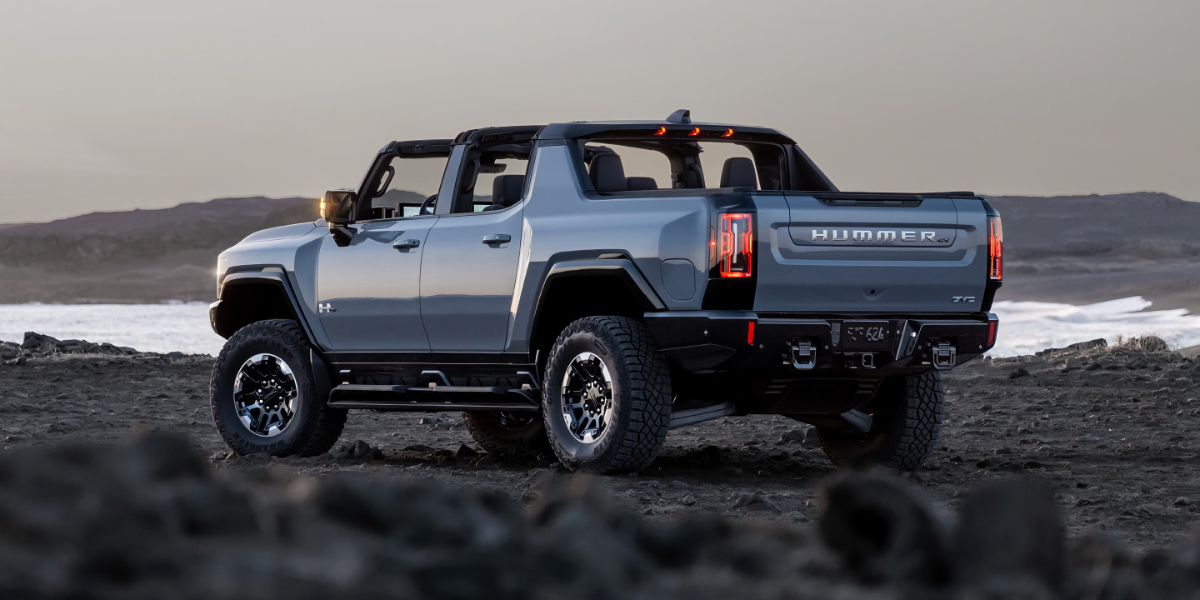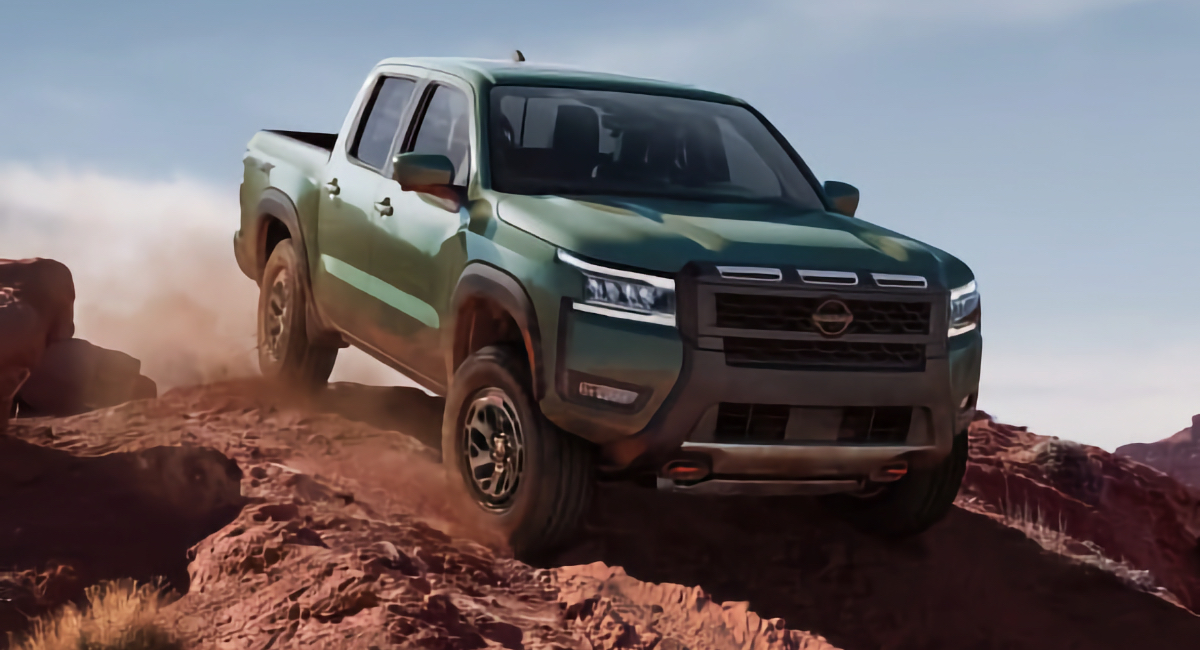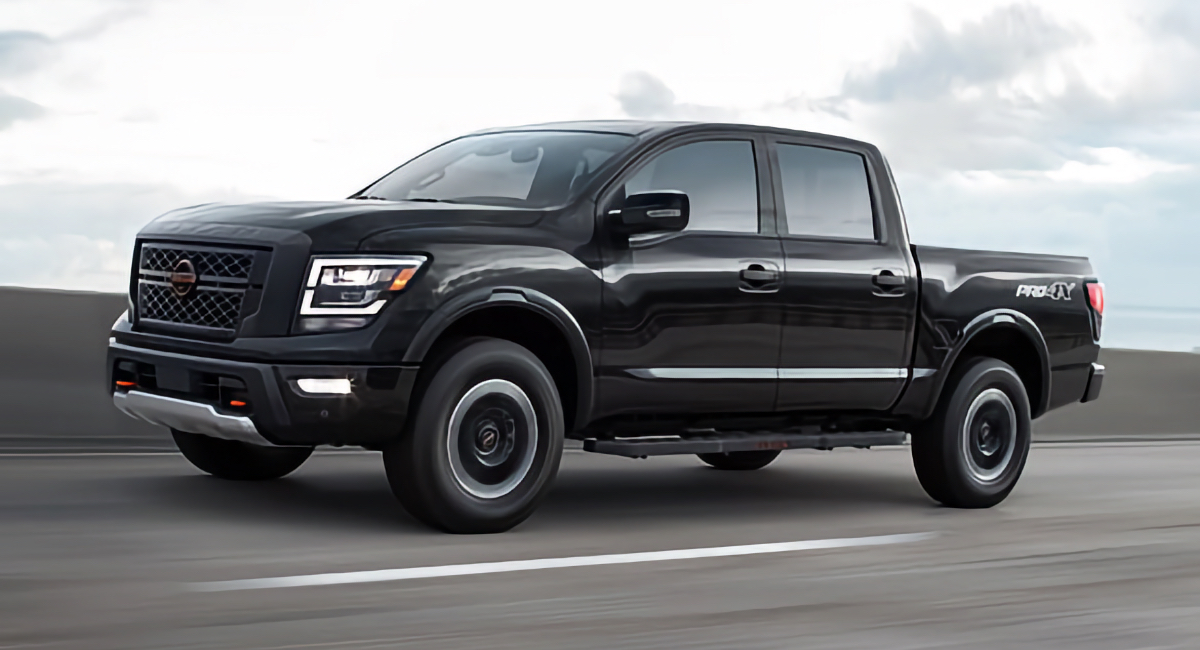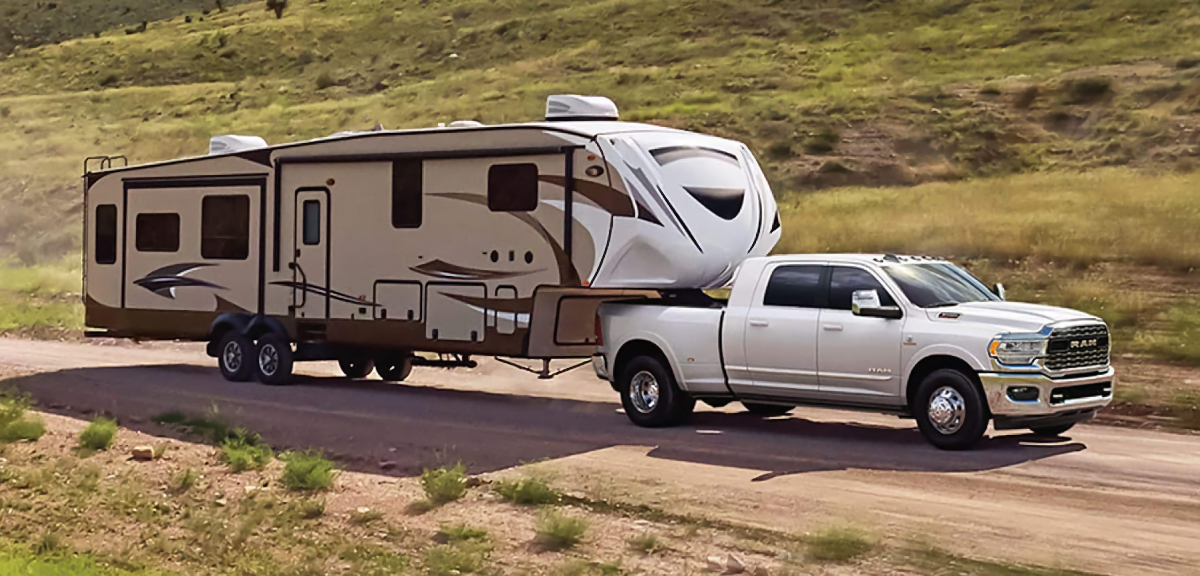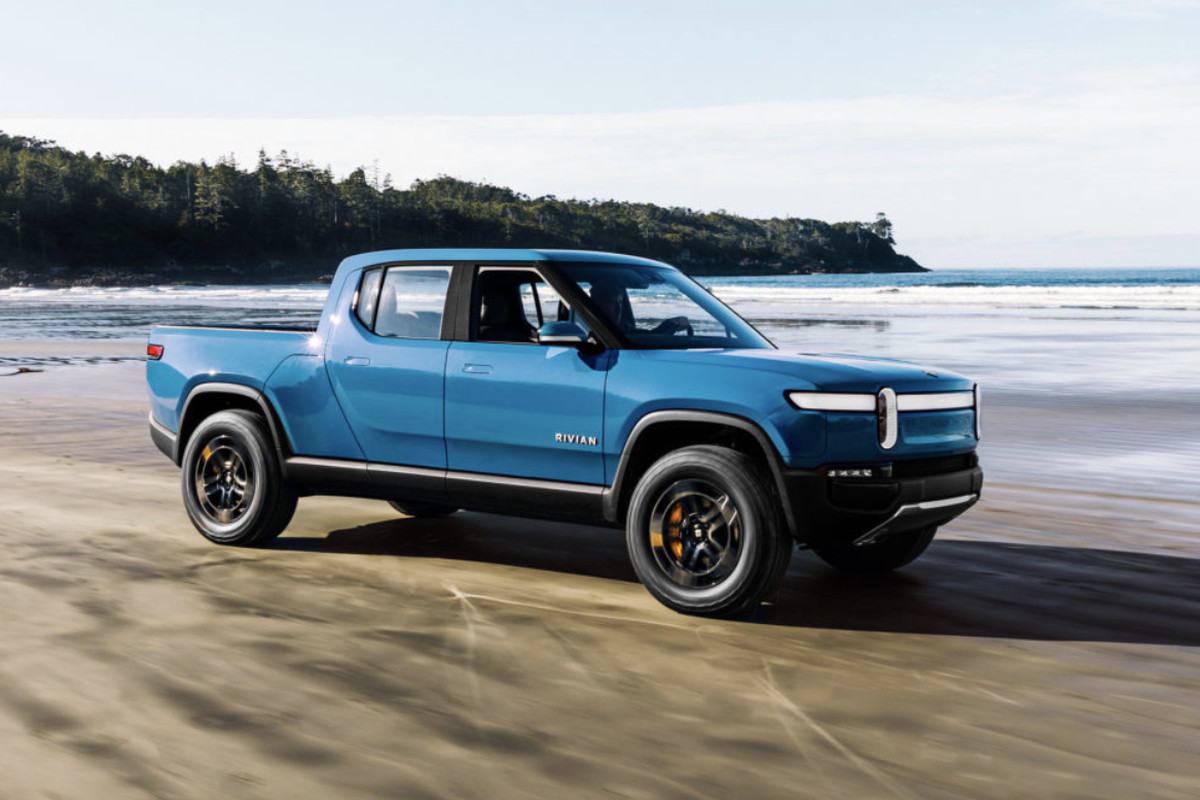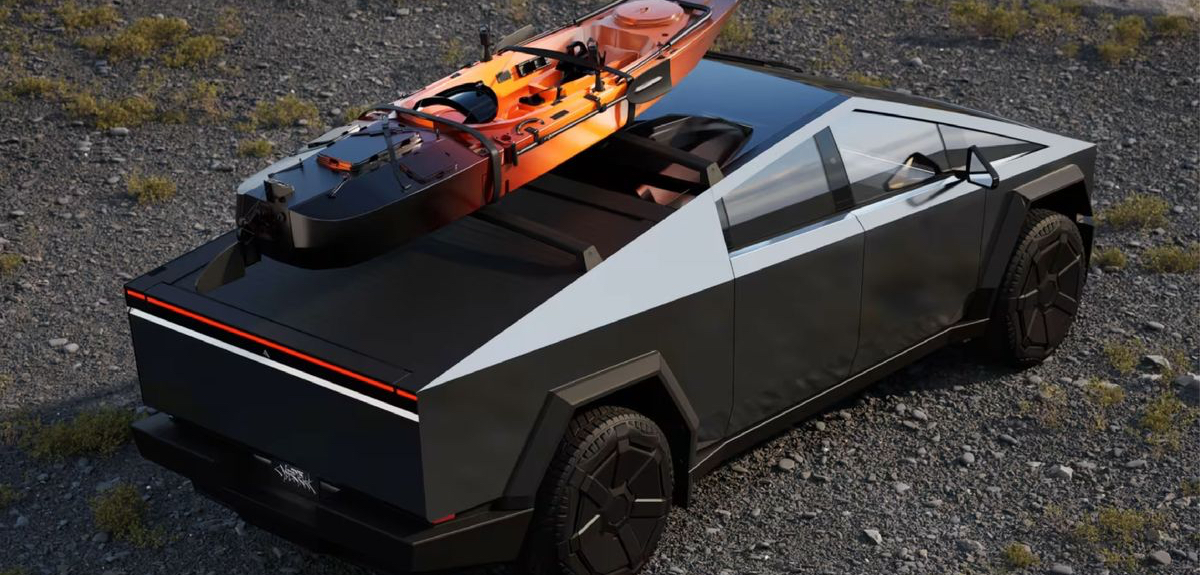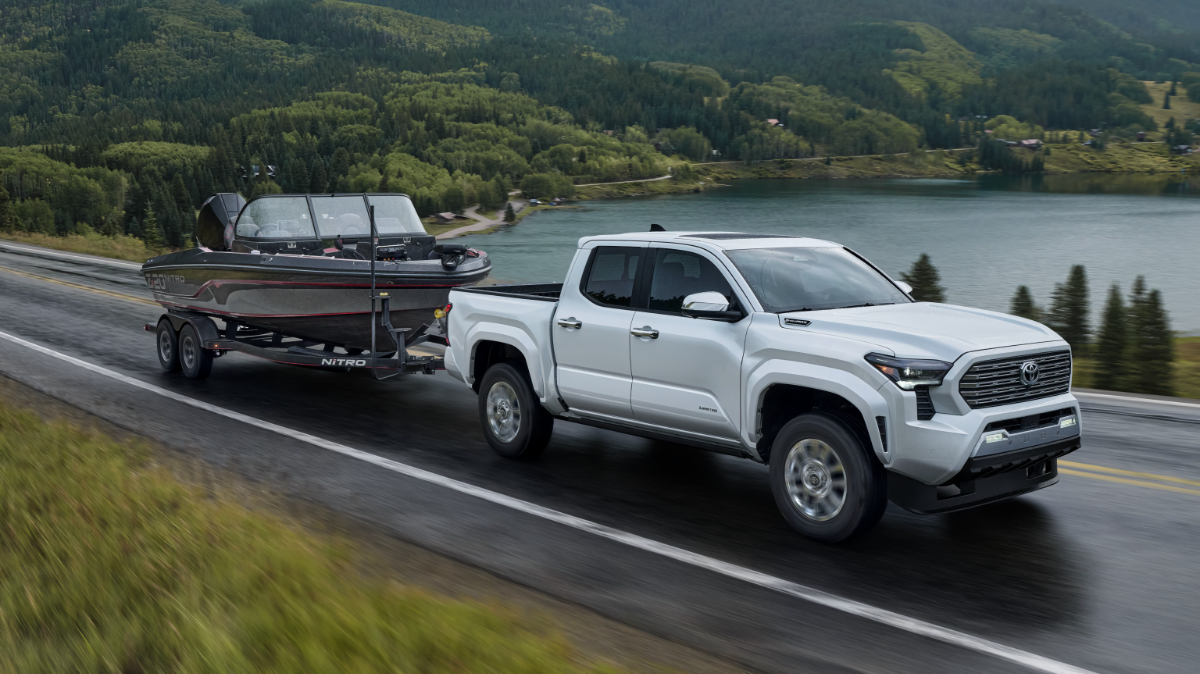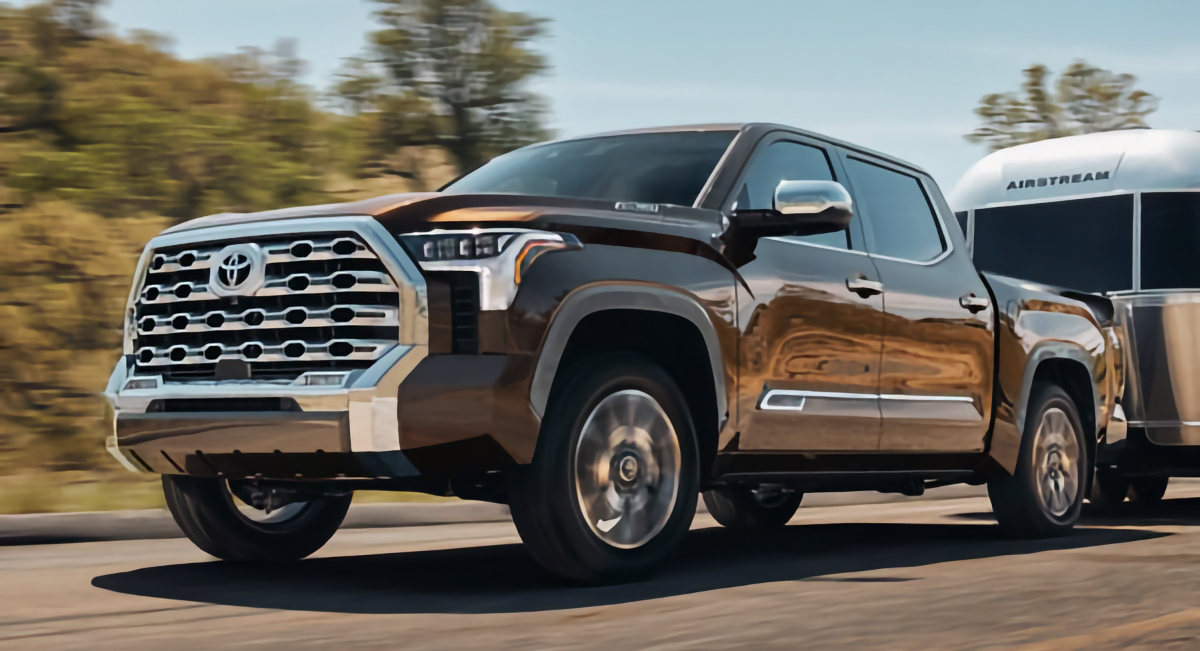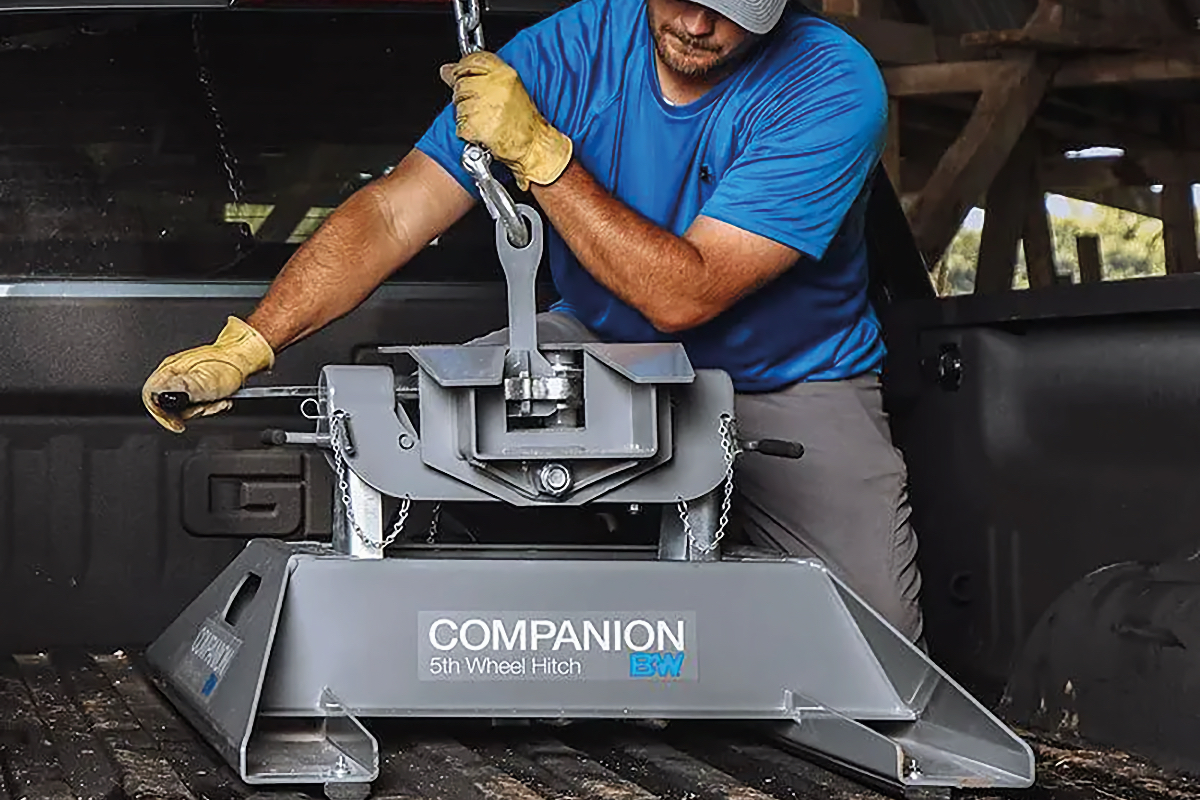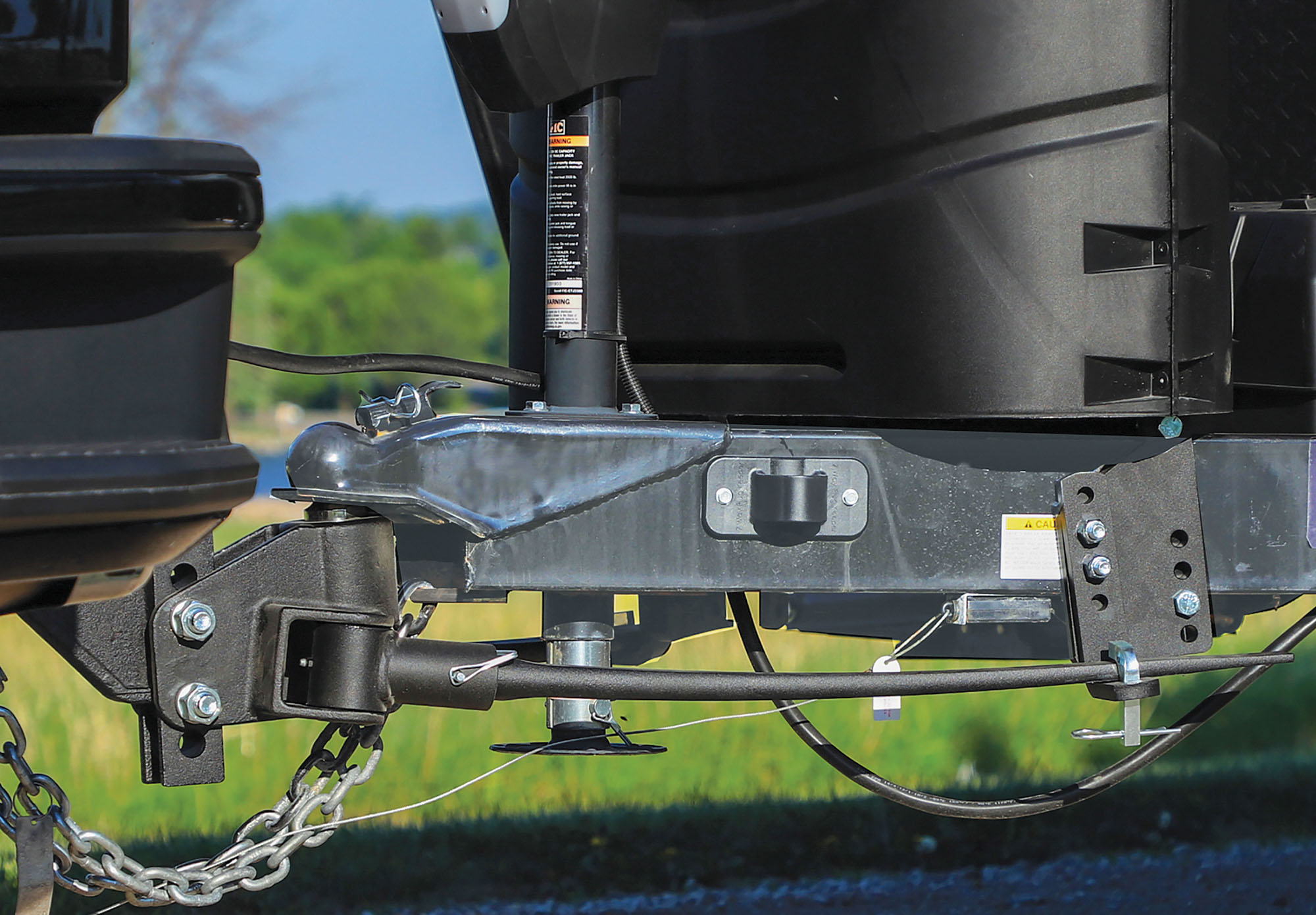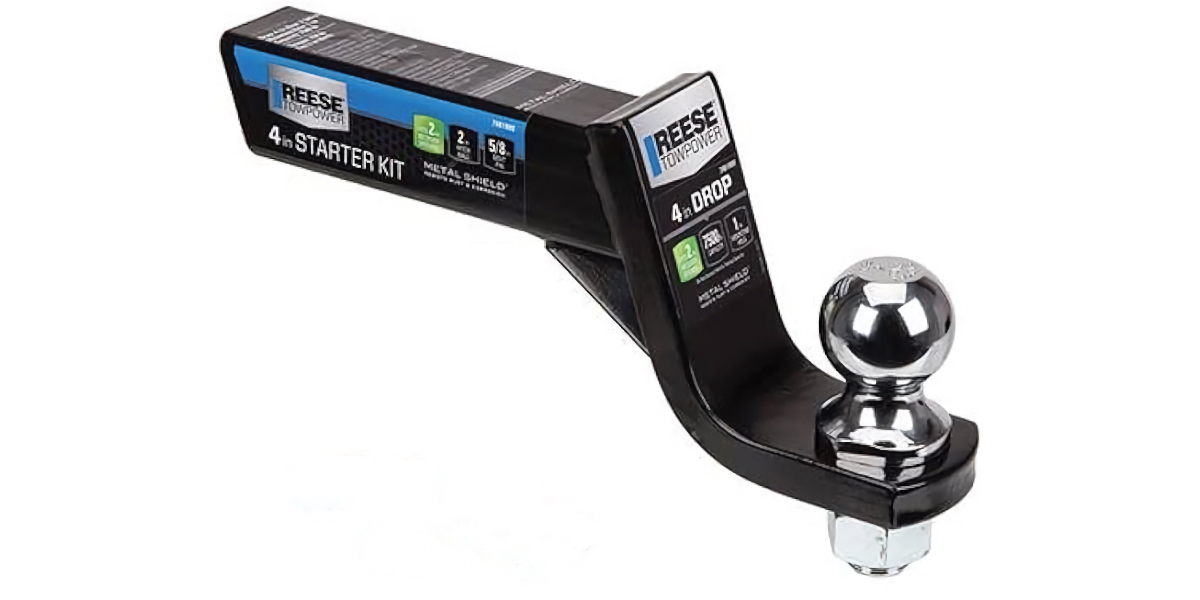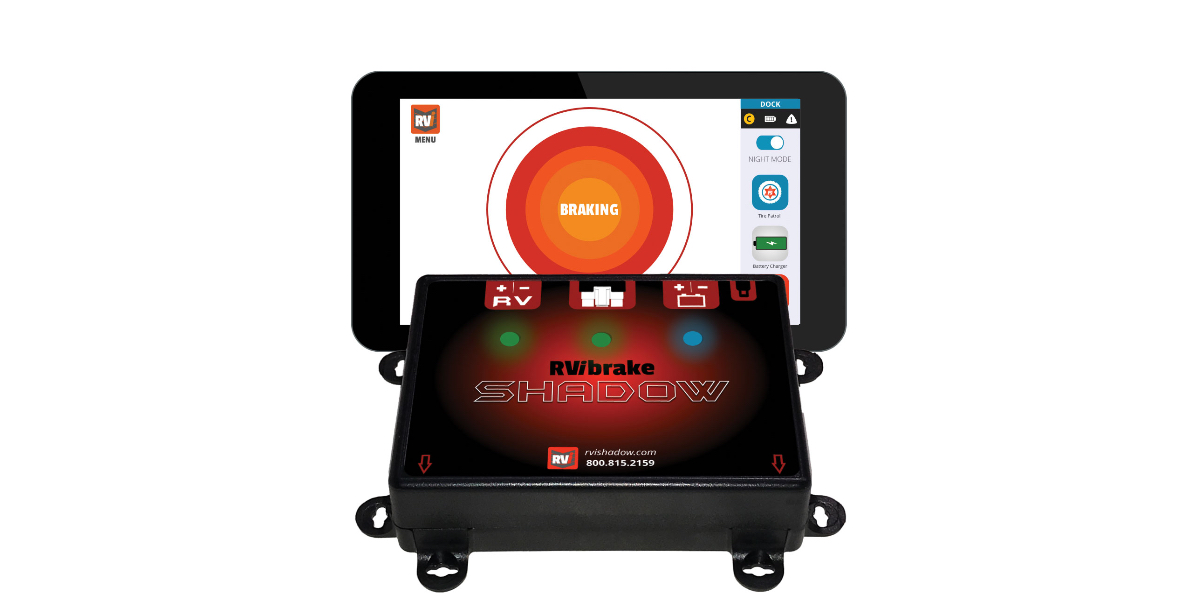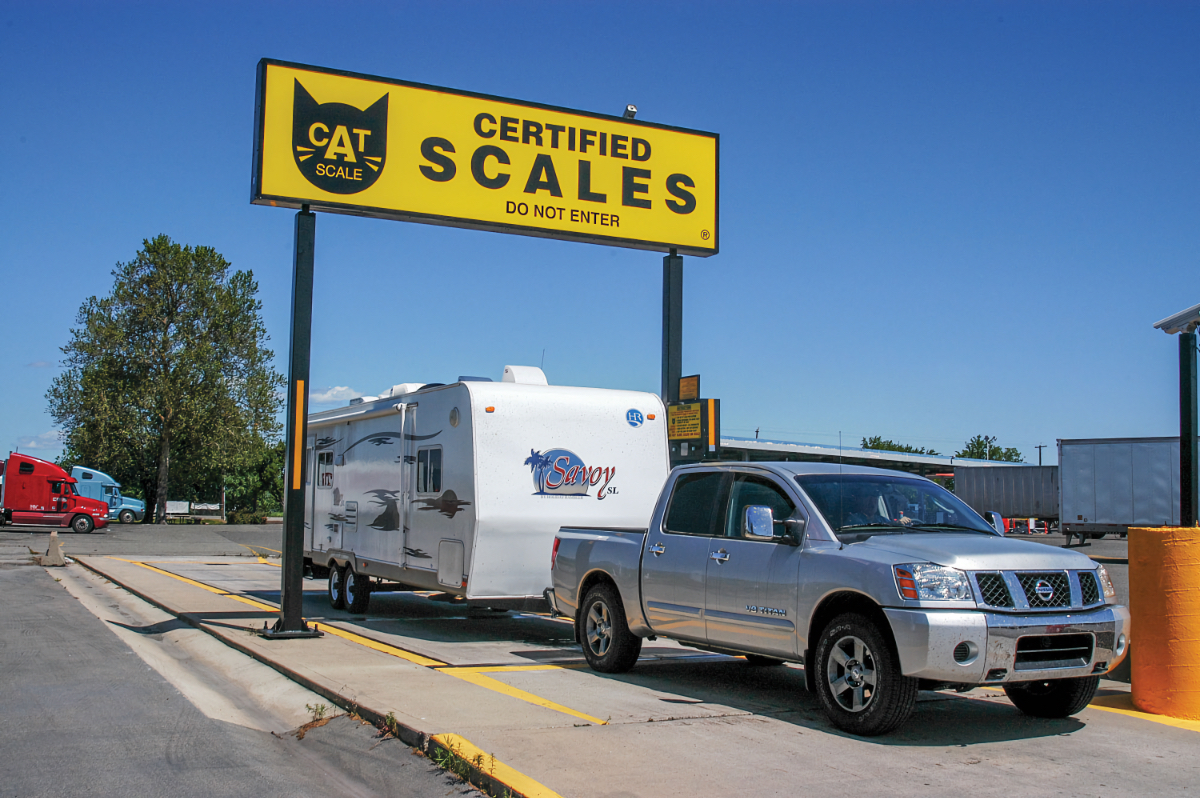Modern pick-up trucks are more powerful, versatile, and fuel-efficient than ever, allowing owners to safely and confidently tow an RV to their local campground or all the way across the country. And with so many great options to choose from, you rarely have to make compromises on style, comfort, or features, either. But just how much can these trucks tow? We did a survey of the current specs for the most popular models and have compiled our findings below. Keep these numbers in mind as you consider your next tow vehicle and the rig you’ll be pulling behind it.
Note: Depending on the manufacturer, there can be literally dozens of variants to a specific truck model. The list we’ve put together focuses on the most popular and readily available versions of those pickups. When purchasing a new truck, be sure to ask the dealer about its exact towing capacity, as the features and specs can vary.
Here are the current towing capacities for every major truck model for 2025.
Chevrolet
Chevy’s line of pick-up trucks include its flagship Silverado models and the midsize Colorado. Here’s what to expect from each of those options;

Photo Credit: Chevrolet
Chevy Silverado 1500
The Silverado 1500 is Chevy’s most popular pick-up and offers towing capacities that range between 8,700 lbs. to 13,300 lbs. depending on the model. Available engines include a 2.7L turbo, a 5.3L V8, a 6.2L V8 (with ZR2 variant), and the Duramax 3.0L I-6 (with ZR2 variant). Variables that impact overall towing capacity include whether or not the vehicle is a Regular Cab, Crew Cab, or Double Cab, as well as the length of the bed (short, standard, and long). Capacities also vary based on 2WD vs. 4WD.
For further information, check out the Silverado 1500 trailering guide here.

Photo Credit: Chevrolet
Chevy Silverado HD (2500/3500)
As with the standard Chevy Silverado, the Silverado HD’s (includes Silverado 2500 and 3500) towing capacity gets quite complicated based on Whether it is a Regular, Crew, or Double Cab. The truck is available with a 6.6L V8 gas or a Duramax 6.6L turbo diesel V8, both of which have variants tuned for the ZR2 trim. The truck is also available in 2WD and 4WD versions, with standard and long bed frames for both drive trains. Buyers can choose between 17″, 18″, 19″, and 22″ wheels, which also have an impact on towing capacity.
For conventional bumper towing, the Silverado 2500 offers capacities between 14,500 lbs. and 20,000 lbs., while the Silverado 3500 offers 14,500 lbs. – 20,000 lbs. depending on the configuration. For fifth-wheel/gooseneck towing, those numbers range from 15,570 lbs. to 22,420 lbs. for the Silverado 2500 and 17,600 lbs. to 36,000 lbs. for the Silverado 3500.
For further information, check out the Silverado 2500 trailering guide here and the Silverado 3500 guide here.

Photo Credit: Chevrolet
Chevy Colorado
Things are far less complicated for
Chevy’s midsize Colorado pick-up. It is available with a 2.7L TurboMax engine, with the option for a ZR2 model with slightly different towing capacity. The standard edition can tow up to 7,700 lbs. in both its 2WD and 4WD versions, while the Colorado ZR2 is available only in 4WD with a maximum trailer size of 6,000 lbs.
The Chevy Colorado trailering guide can be found
here.
Ford
The Ford F-Series is the best selling line of trucks in the US, but the company also sells the Maverick and Ranger.

Photo Credit: Ford
Ford F-150
Year in and year out, the F-150 is Ford’s top selling vehicle, and is available in XL, STX, XLT, Lariat, King Ranch, Platinum, and Raptor trim levels. Towing capacity for those models ranges from 8,400 lbs. to 13,500 lbs., depending on the engine and truck style, with options including a regular cab and a SuperCrew cab. Engine types include a 2.7L EcoBoost V6, a 3.5L EcoBoost V6, a 3.5L PowerBoost Hybrid V6, a 3.5L EcoBoost High-Output V6, a 5.0L Ti-VCT V8, and a 5.2L Supercharged V8. Adding a towing package also improves overall performance.
For more information on the Ford F-150’s towing capacity, click here.

Photo Credit: Ford
Ford F-150 Lightning
The F-150 Lightning is Ford’s entry into the all-electric truck space and is available in XLT, Flash, Lariat, and Platinum trims. Tow ratings vary by model, with the base XLT offering 5,000 lbs. of capacity, increasing to 7,700 lbs. with the addition of the optional tow package. Both the Flash and Lariat editions are rated to tow 7,700 lbs. in their base configurations and as much as 10,000 lbs. when equipped with the tow package. Meanwhile, the F-150 Lighting Platinum ships from the factory with the battery range extender and max towing package, giving it a capacity of 8,500 lbs.
For more on towing with the Ford F-150 lighting, click here.

Photo Credit: Ford
Ford Super Duty (F-250/F-350/F-450)
Ford’s Super Duty line of pick-up trucks include the F-250, F-350, and F-450, each of which is available in XL, XLT, Lariat, King Ranch, Platinum, and Limited trim levels. Engine sizes include a 6.8L gas V8, a 7.3L gas V8, a standard 6.7L Power Stroke diesel, or a 6.7L High Output Power Stroke diesel, giving these vehicles a towing capacity of 18,900 lbs. to 40,000 lbs.
For more information on towing capacities for the Ford Super Duty, click here.

Photo Credit: Ford
Ford Ranger
Ford’s entry into the midsize truck market is the Ranger, which comes in XL, XLT, Lariat, and Raptor trims. This truck is available with a 2.3L EcoBoost I4 in the 2WD and 4WD models and a 2.7L EcoBoost V6 that is paired only with 4WD. Both versions offer a towing capacity of 7,500 lbs. The Ranger Raptor comes with an exclusive 3.0L EcoBoost V6, which gives it higher performance in terms of speed and acceleration, but limits towing capacity to 5,510 lbs.
For more information on the Ford Ranger’s towing capabilities, click here.

Photo Credit: Ford
Ford Maverick
This small truck has been a major sales success for Ford, proving there is a market for smaller, more affordable trucks in the US. But this model does offer limited towing capacity with its 2.5L I4 hybrid and 2.0L EcoBoost I4 engines. Both have identical 2,000 lbs. tow ratings in their standard versions, doubled to 4,000 lbs. with the optional tow package.
GMC
An upscale sister brand to the Chevy truck, GMC offers similar features and performance while carving a personality all its own.

Photo Credit: GMC
Sierra 1500
The Sierra 1500 is a cousin to the Chevy Silverado, offering similar performance as a result. There are multiple trim levels to choose from including the SLE, SLT, Pro, Elevation, Denali, Denali Ultimate, AT4, and AT4X. Buyers can elect for regular, double, and Crew Cab options, with 2WD or 4WD, and either a regular or long bed. GMC offers four engines, including the 310HP TurboMax, a 5.3L V8, a 6.2L V8, and a 3.0L Duramax Turbo Diesel. Max towing capacity ranges from 9,500 lbs. to 13,200 lbs.

Photo Credit: GMC
Sierra Heavy Duty
The Sierra Heavy Duty line-up includes the 2500 and 3500, which offer substantial power upgrades over the 1500 model. Like their little brother, the HD trucks are available in 4×2 and 4×4 configurations and have a regular, double, or Crew cab option. These trucks have fewer engine choices, however, with buyers selecting between a 6.6L V8 gas engine for a 6.6L Duramax Turbo Diesel V8 on Pro, SLE, SLT AT4, Denali, AT4X, and Denali Ultimate trims. Conventional tow ratings for the 2500 go from 14,500 lbs. to 20,000, while fifth-wheel towing ranges from 18,600 lbs. to 22,430 lbs. As you would expect, the 3500 increases those numbers appreciatively with a conventional tow capacity of 14,500 lbs. to 20,000 lbs., and a fifth-wheel rating of 17,500 lbs. to 36,000 lbs. depending on the configuration.

Photo Credit: GMC
Canyon
Sporting and capable, the Canyon is a great midsize truck with performance on par with the competition. The vehicle is available in three trim levels—Elevation, AT4, and Denali—with 2WD and 4WD drivetrains. It comes with a TurboMax engine, giving a tow rating of 7,700 lbs. This puts it somewhat on par with the Chevy Colorado, albeit with a more luxurious interior and comfortable ride.

Photo Credit: GMC
Sierra EV Denali
Relatively new to the market as of press time, the Sierra EV Denali is GMC’s all-electric pick-up truck, It ships with an electric drivetrain that produces 760HP and 785 lb.-ft. of torque, giving it a towing capacity of 10,500 lbs.

Photo Credit: GMC
Hummer EV
GMC’s first electric truck came in the form of the Hummer EV, which lives up to its heritage in terms of power and stature. This beast of a vehicle goes from 0-60 MPH in three seconds flat. Its electric drive also produces a staggering 1,000 HP and can tow up to 12,000 lbs. in the three-motor variant.
Nissan
While not as popular as their American counterparts, Nissan trucks have built a loyal following based on their dependability and functionality. The Japanese automaker also offers a streamlined, easy to understand line-up for helping buyers choose the vehicle that best meets their needs.

Photo Credit: Nissan
Frontier
The Nissan Frontier hhas been a mainstay in the brand’s line-up for years, and in 2025 it gets a mid-cycle refresh to give it a slightly different look and improved capabilities, including a higher max tow rating. Sold in S, SV, SL, and Pro-X trims, the Frontier comes with a standard or long bed, and in Crew or King Cab configurations, along with 2WD and 4WD drivetrains. All versions are powered by a 3.8L DOHC 24-valve 6-cylinder engine that gives it a towing capacity of 6,760 lbs. to 7,150 lbs., putting it on par with its American-made competition.

Photo Credit: Nissan
Titan/Titan XD
If you’re a fan of the Nissan brand and need a larger truck to tow your rig, the Titan and Titan XD may be what you’re looking for. This full-size truck is available in King and Crew Cab models, with both 4×2 and 4×4 drivetrains available. Both use a 5.6L DOHC 32-valve 8-cylinder engine, although the XD variant is designed for heavier payloads and towing. Both offer tow packages that include special tow modes, an integrated brake controller, and sway control. The standard Titan has a towing capacity of 9,050 lbs to 9290 lbs, while the larger XD gives the truck a tow rating of up to 11,040 lbs.
Ram
In recent years, the
Ram 1500 has become legitimate competition for the Ford F-150 and Chevy Silverado, building a loyal following thanks to its impressive capabilities, features, and reliability. Additionally, the brand offers heavy-duty trucks in the form of the 2500 and 3500 models, and has electric pickups on the horizon.

Photo Credit: Ram
Ram 1500
The Ram 1500 is the mainstay in the company’s line-up, and is available in Crew Cab and Quad Cab editions with short (5′ 7″) and long (6′ 4″) beds and 4×2 and 4×4 configurations. Additionally, there are three engines to choose from, including the 3.6L DOHC Pentastar V6, the 3.0L IG Twin Turbo Hurricane, and the 3.0L IG Twin Turbo Hurricane High-Output. Towing capacity ranges from 6,370 lbs. to 11,550 lbs. based on the configuration. Those numbers include the RAM 1500 RHO, which is a specially-tuned off-road version of the vehicle.
For full details on the Ram 1500’s towing capacities, click here.

Photo Credit: Ram
Ram 2500/3500
Powered by either a 6.4L Hemi V8 or a 6.7L Cummins IG High-Output Turbo Diesel, the Ram 2500 offers 10,530 lbs. to 20,000 lbs. of towing capacity. Need even more towing power? Step up to the Ram 3500, which pushes those numbers even higher, giving drivers a tow rating of 14,560 lbs. to 37,090 lbs. Both trucks ships in Regular, Crew, and Mega Cab editions, with 6′ 4″ and 8′ bed lengths. An optional tow package includes advanced features like reverse steering control, an auto-leveling air suspension, integrated trailer TPMS, and other built-in towing hardware.
Read more about the Ram 2500 and 3500 towing capacities here.
Rivian
When Rivian revealed its R1T truck back in 2018, it launched the entire electric pick-up market. Today, it is still the most compelling option for those looking for an EV, with some compelling features and distinctive looks.

Photo Credit: Rivian
R1T
The R1T is a feature-packed EV that doesn’t have a lot of different variants. The truck’s electric drivetrain gives it plenty of power and torque, allowing it to go from 0-60 MPH in 2.5 seconds, with a range of up to 420 miles with the extended battery pack. It also comes standard with an adaptive air suspension and a tow rating of 11,000 lbs.
Tesla
Tesla was a little late to the electric truck game, but its entry into the space brings some impressive capabilities, even if its looks (and founder) are a bit polarizing. The vehicle is so influential though, that slide-in campers and towables are built to accommodate it.

Photo Credit: Tesla
Cybertruck
This electric truck offers similar performance to the competition, offering a 325-mile range on the standard AWD model and as much as 440 miles on the limited edition Cyberbeast model. Both have impressive acceleration, too, going from 0-60 MPH in 4.1 and 2.6 seconds, respectively. The truck also has a towing capacity of up to 11,000 lbs.
Toyota
Known for their reliability and resale value, Toyota trucks are a popular alternative to American-made models. But how do they perform when towing? Here’s what you need to know.

Photo Credit: Toyota
Tacoma
Toyota’s midsize truck is extremely popular with the active outdoor crowd. After a refresh last year, the Tacoma has a new look and better tech, including an optional advanced tow package with backup guidance features and an integrated brake controller. The “Taco” comes in a dizzying array of trim levels, including the SR, SR5, TRD PreRunner, TRD Sport, TRD Off-Road, Limited, the Trailhunter, and the TRD Pro. Naturally, there are both 4×2 and 4×4 options.
Engine options include an i-Force 2.4L turbocharged motor that comes standard and an optional upgrade to the i-Force Max hybrid powertrain. Standard towing capacity for the Tacoma is 3,500 lbs., but when properly equipped, that number can be expanded to as much as 6,500 lbs. depending on the model and add-on packages.

Photo Credit: Toyota
Tundra
The Tundra is Toyota’s larger, more powerful truck built to take on the Ford F-150 and Chevy Silverado. The pick-up is available in multiple trim levels, including the SR, SR5, Limited, Platinum, and 1794 Edition, with double and CrewMax cabs. Buyers have a choice of 2WD and 4WD models, as well as two engines— the i-Force 3.4L Twin-Turbo V6 (in 358HP and 389HP variants) and the i-Force Max 3.4L Twin-Turbo Hybrid that produces 437HP. Those powertrains give the vehicle a towing capacity of 8,300 lbs. to 12,000 lbs. Like the Tacoma, the Tundra also has advanced trailering features, like camera backup and straight path assist.
The post The Towing Capacity of Every 2025 Pick-Up Truck appeared first on RV.com.
